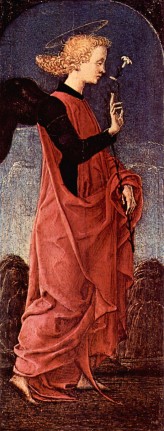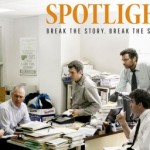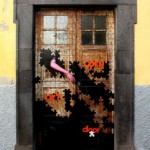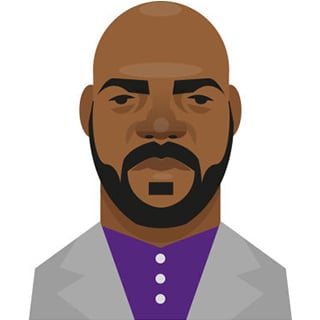in unweariable endurance,
and in aims which put sympathy out of question,
that the angel is shown.
— Ralph Waldo Emerson
Advent cries out in two voices – a duet of harks and clamorings: the first voice is always John’s, the Forerunner, the Voice crying in the wilderness; the second is the Angel Gabriel’s, who looses Mary’s long recitatif, her Magnificat, singing out in grace notes the angel has proclaimed as her great virtue, the same truth that John trumpets in the wilderness.
It’s worth noting that Advent is not chronological, not a biography. Advent is not a lens focusing on a manger in Bethlehem. The readings leap backward through the prophets and forward into the time of John, when Jesus’ is an adult. Advent, then, bids us to widen the lens of our perspective, to look at Christmas not as a moment in time but as a great arc of holiness, bending around the ages like an embracing arm; a defending arm; a strong arm; a sheltering arm.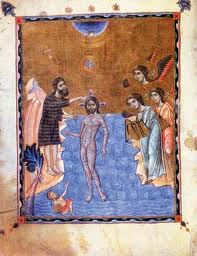
In the tradition of God’s people holy events are heralded by voices arising from the darkness, from times in which the people are lost in a wilderness, when even the law has become corrupted. John and Mary name the corruptions of Advent, crying out for a new spirit, proclaiming the one who is coming. They are always heralding – always calling out that a new spirit and a new time is coming. So we do not go back to Bethlehem, but forward, for Bethlehem is to be found in a new and unknown time.
But the conventional understanding, especially for Protestants, has been to focus our attention on the one moment of old, and to call it a once-and-for-all moment. We behold, then we move away. Both of these understandings have been at work among us in our cultural approaches to Michael Brown’s death in Ferguson, Missouri.
White Americans have, for the most part, used their conventional lens to look at this death as a single incident, in which the central issue has been whether the white police officer was illicit in his behavior or not, and the answer to this, for many, determined whether Michael Brown’s death was an event worthy of public decrying in the spirit of John the Baptist as a watershed moment in moral history, or a personal tragedy but not a public corruption.
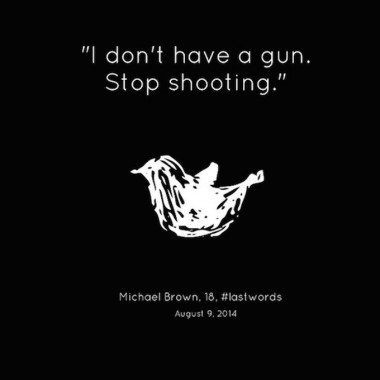 Black Americans have seen Michael’s death as part of a larger pattern of violence in which young black men in America are caught, a pattern that has not changed since the days of Jim Crow. And so the issue for them has not been focused on ‘what did Officer Wilson do and why did he do it’, but ‘why does this event keep on recurring and how do we change this pattern?’ Lots of evidence, including data, analysis of recent legislative enactments, and analysis of police purchasing of military-style weapons, has been put forward. Here is just a little of the data, first from ProPublica and then from the Justice Department:
Black Americans have seen Michael’s death as part of a larger pattern of violence in which young black men in America are caught, a pattern that has not changed since the days of Jim Crow. And so the issue for them has not been focused on ‘what did Officer Wilson do and why did he do it’, but ‘why does this event keep on recurring and how do we change this pattern?’ Lots of evidence, including data, analysis of recent legislative enactments, and analysis of police purchasing of military-style weapons, has been put forward. Here is just a little of the data, first from ProPublica and then from the Justice Department:
- The 1,217 deadly police shootings from 2010 to 2012 captured in the federal data show that blacks, age 15 to 19, were killed at a rate of 31.17 per million, while just 1.47 per million white males in that age range died at the hands of police. One way of appreciating that stark disparity, ProPublica’s analysis shows, is to calculate how many more whites over those three years would have had to have been killed for them to have been at equal risk. The number is jarring – 185, more than one per week.
- The Justice Department’s Bureau of Justice Statistics reports that between 2003 and 2009 there were more than 2,900 arrest-related deaths involving law enforcement. That’s about 420 deaths a year. Black people were about four times as likely to die in custody or while being arrested than whites.
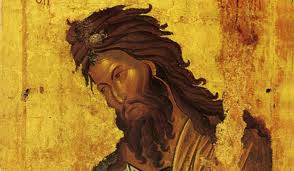 For Black Americans, Michael Brown’s death is a prophetic moment in Advent time – a time, that is, in which we all need to bend our spirits to beseeching prayers for a new justice, a new history, to be born.
For Black Americans, Michael Brown’s death is a prophetic moment in Advent time – a time, that is, in which we all need to bend our spirits to beseeching prayers for a new justice, a new history, to be born.
John the Baptist cried out about sin and repentance, but he also named some names. We know he was executed for naming as corrupt, the Herods, a puppet monarchy set up by the Roman Prefecture. In particular, John railed against the succession of the present King Herod to his brother’s throne, through a convenient marriage to his brother’s widow, soon after his brother’s sudden death, which many suspected was from poison.
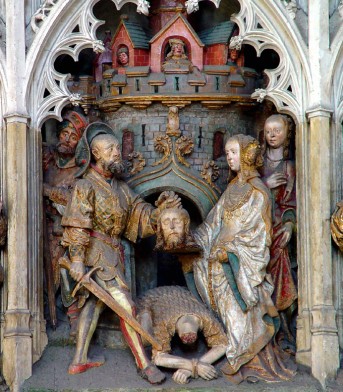 The Roman historian assigned to Israel, Josephus, records staggeringly large crowds going out to hear John, as many as 50,000. Herod deemed such crowds a threat, and sent guards to seize John and put him in prison. Jesus was part of the throng who went to hear John, and John hailed Jesus as the man of the hour. The Spirit that came upon Jesus in the Jordan, when John’s hand poured water upon him, resonated with John’s discerning spirit.
The Roman historian assigned to Israel, Josephus, records staggeringly large crowds going out to hear John, as many as 50,000. Herod deemed such crowds a threat, and sent guards to seize John and put him in prison. Jesus was part of the throng who went to hear John, and John hailed Jesus as the man of the hour. The Spirit that came upon Jesus in the Jordan, when John’s hand poured water upon him, resonated with John’s discerning spirit.
In the church year Advent is always four weeks long, no more, no less. But the wilderness and the unknown are never predictable. As Jesus said, neither the day nor the hour are known. Jesus promises, the days are coming . . . .
It is not true that we must accept inhumanity and discrimination, hunger and poverty, death and destruction;
This is true: I have come that they may have life, and that abundantly.
It is not true that we are simply victims of the powers of evil who seek to rule the world;
This is true: To me is given authority in heaven and on earth, and lo I am with you, even until the end of the world.–Daniel Berrigan, from Advent Credo
___________________________________________________
Illustrations:
1. Archangel. Arturo Cosme, National Gallery of Art, D.C. Vanderbilt Divinity School Library, Art in the Christian Tradition.
2. John the Baptist baptizing Christ. Armenian Illuminated Manuscript, 1268. Google Images. Vanderbilt Divinity School Library, Art in the Christian Tradition.
4. Poster, I Don’t Have a Gun, Stop Shooting. Ferguson, Missouri. Google Images.
5. Martyrdom and Death of John the Baptist, Choirstall screen carving. 1508. Cathedrale dAmiens, France. Vanderbilt Divinity School Library, Art in the Christian Tradition.
6. John the Baptist, Russian Icon. Google Images

